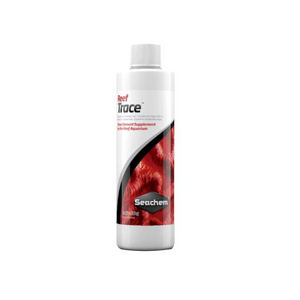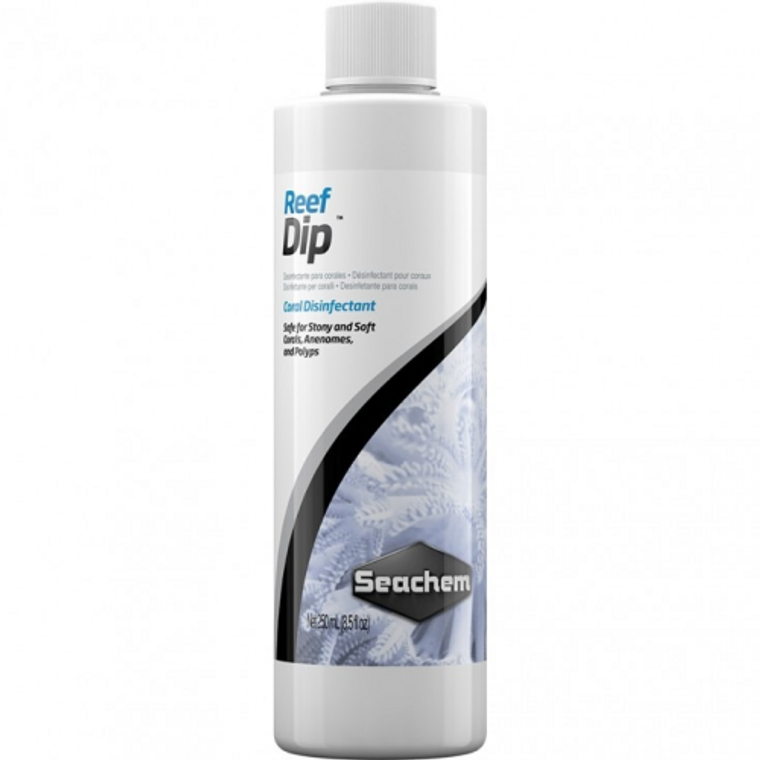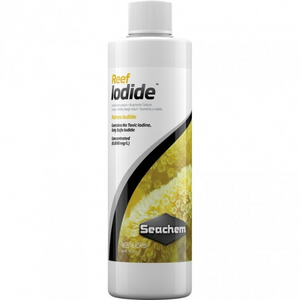
Size: 250 mL
Reef Dip contains elemental iodine complexed to a protective slime coat for safely and gently disinfecting corals. It is effective against bacteria, fungus, and protozoans. It may be used prophylactically (without evidence of disease) or to remedy diseased specimens. It is safe to use with both stony and soft corals. It is also safe for anemones and polyps.
KEY FEATURES:
- Coral disinfectant
- Elemental iodine complex, disinfects corals
- Good for use before introducing new corals
DIRECTIONS:
Do not use in the aquarium. Use in a separate container. Remove 4L (1 US gallon) of water from the source aquarium to a container suitable for dipping. Add 5-10 mL (1-2 capfuls) of Reef Dip and mix. Place coral specimen in dip for 15-30 minutes, depending on severity of problem. In very severe cases, a double dose may be used. With clear and accessible lesions, dip concentrate may be painted on lesions directly before placing in dip. Observe animals during treatment for evidence of adverse reactions such as excessive sliming.








